In the days of old, yogis gave up their worldly possessions and adopted a system of ancient techniques and rituals, with the intention to unite with God. Today, Americans have a slightly different approach.
After reflecting on yoga's history and purpose, it is surprising to me how yoga has become so popular in such a capitalistic society. Steeped in Hinduism, with an objective fueled by the renunciation of extravagant pleasures, yoga seems to be a very unlikely endeavor for Westerners who are known for buying, acquiring, and disposing of stuff.
But the image of yoga carries a subtle hint of romance at its core, and I think that is what makes it a huge success in America. Not unlike mesmerized cobras that sway in response to the seductive sounds of the snake charmer's whispering flute, those flirting with the desire to learn more about yoga find themselves drunk with love in the wake of a $6 billion dollar industry.
While some admire and support how yoga has evolved to help so many, others would say we have taken it a bit too far. The picture of modern yoga often gets caught in between the covers of magazines, emblazoned with the same dazzle and panache of fashion models in the latest designer threads.
Organizations such as Take Back Yoga, a Hindu American establishment, see the true spiritual significance of yoga being cleaved out of modern yoga classes across the country. Wanting to see yoga return to its Hindu roots, groups such as these work hard at spreading the message that modern yoga is inauthentic and clearly missing the point.
That doesn't seem to stop us from practicing. The mavens who currently lead the modern yoga movement and their devoted followers add just the right combination of ingredients to keep the industry growing. This dynamic relationship serves both the trade and the people who contribute to it, or so it would seem.
Those allured by the promise of happiness through yoga might be deceived. Chogyam Trungpa, author of Cutting Through Spiritual Materialism, wrote:
"Walking the spiritual path properly is a very subtle process; it is not something to jump into naively. There are numerous sidetracks, which lead to a distorted, ego-centered version of spirituality. We can deceive ourselves into thinking we are developing spiritually when instead we are strengthening our egocentricity through spiritual techniques. This fundamental distortion may be referred to as spiritual materialism."
Is yoga making us happy?
We might spend years practicing a certain style, following our favorite teacher, or doing some yogic breathing when we're stressed out, and those habits could be saving our lives. As a result of our light-hearted practice, depression may lift and we may feel great. The problem arises when the teacher moves, the class is canceled, or we let life get in the way. Happiness can't be sustained if it is dependent on something outside us. We have to keep doing the work ourselves.
Is yoga making us better people?
Hope ensues when we think we've finally met some guru, found some practice, or read some book that will fix us. But just as a beautiful fall day can turn bitter cold overnight, so can our spiritual practice leave us once again in the dark. The darkness is where most of us will draw the line, give up, and search for a different method, guru, or book. Not unlike a toy that breaks and is doomed for the trash can, if we don't push through the uncomfortable moments of facing our demons and start fixing what is broken, we will be of no service to the world.
Is yoga making us more self-aware?
All forms of yoga teach us to look within. The concept of looking within seems easy enough, but guess what? It isn't. What do you hear when you sit quietly and listen to your own thoughts? The voice in your head sounds like an annoying infomercial that tries to sell you a mountain of crap.
With commitment and devotion, we can turn down the volume on our erratic thoughts, but we seem to seek distractions instead. Some might choose to shop, tweak their diets, or do yoga excessively, while others search for a different fix in the form of a hero, an age-old guru, or a traditional doctrine that will control our mind. Every distraction will eventually defeat our intention, unless we keep practicing.
Modern day yoga in America is an interesting phenomenon. In the traditional sense, what most of us do on the yoga mat is not yoga. Although the health benefits are greater than anything else we've ever tried, many still do not consider it yoga.
On the other hand, what we are doing on the mat is having a profound effect. Beyond the physical health benefits, Americans who spend time on their yoga mats are becoming more diet-conscious, environmentally-savvy, and genuinely interested in living a happy life.
Poised and self-assured, today's yoga practitioners are leading a massive movement toward something the world has not yet experienced. The timing of yoga's popularity in America might just be a saving grace.
Krishnamacharya, one of the most influential yoga teachers of the 20th century said, "Teach what is appropriate for an individual." Perhaps the current picture of yoga in America is exactly as it needs to be.
If we stick with it and don't fall victim to our old egocentric habits of finding happiness in stuff, or trashing instead of fixing what's broken, and being easily distracted by whatever it is we think can solve all of our problems, we might just be able to sustain this ancient practice for centuries to come.
For more by Jill Lawson, click here.
For more on yoga, click here.